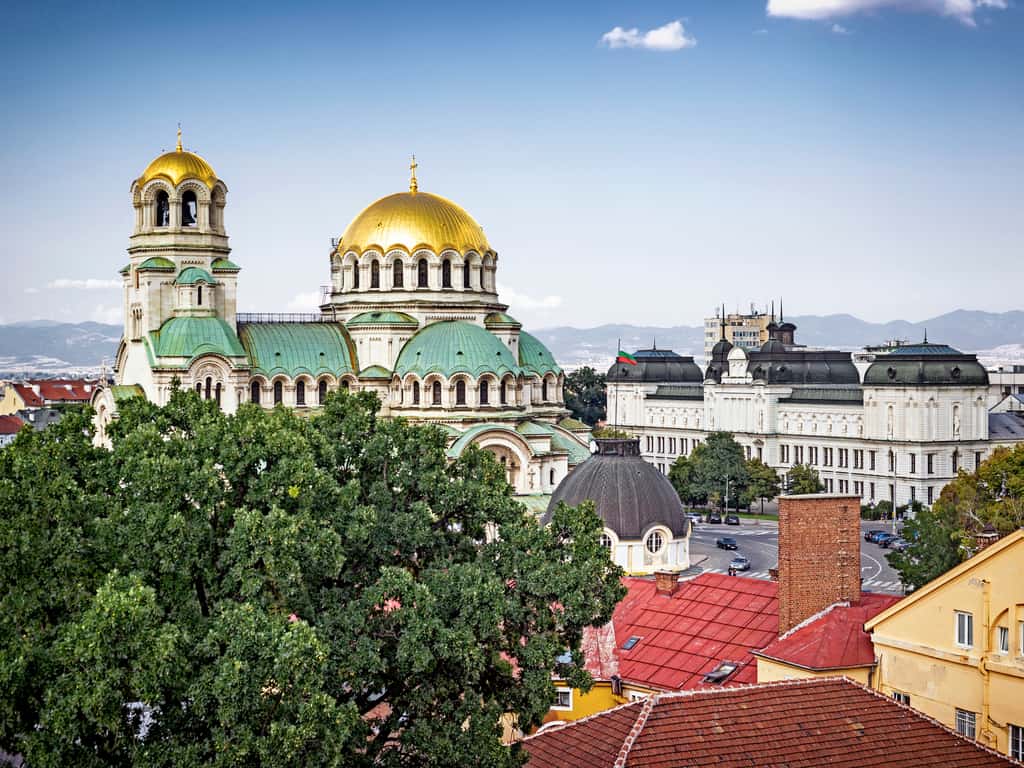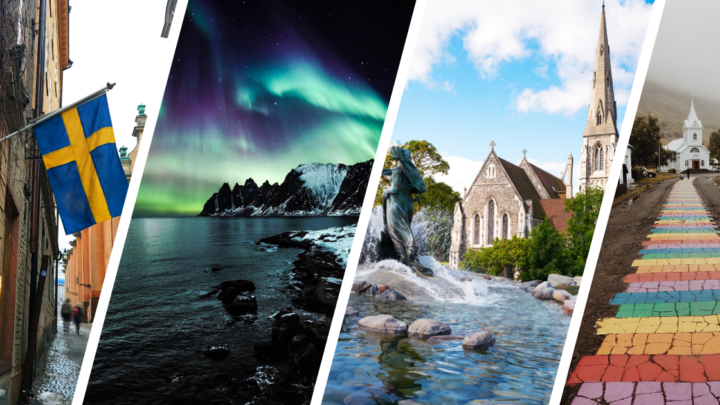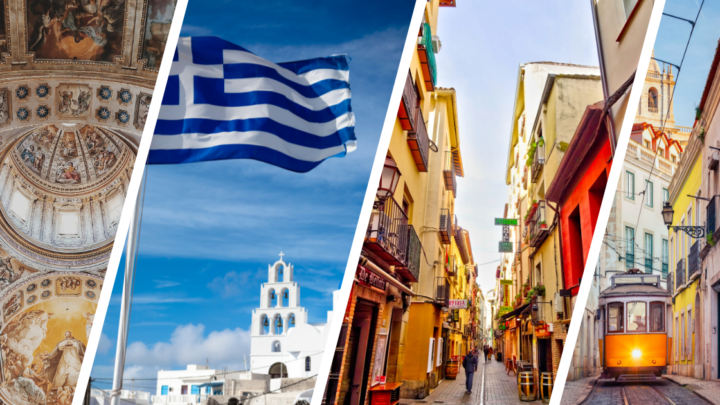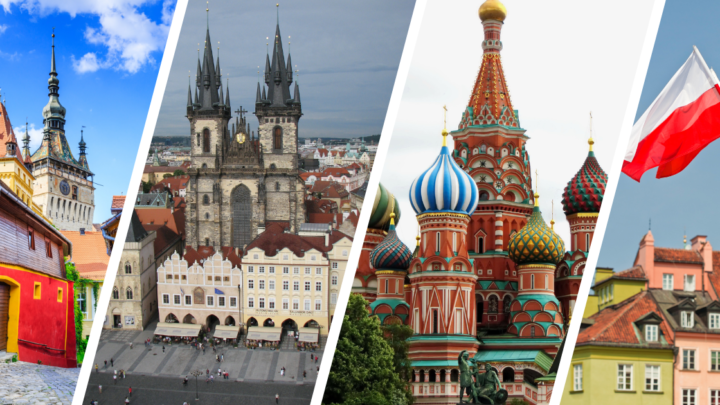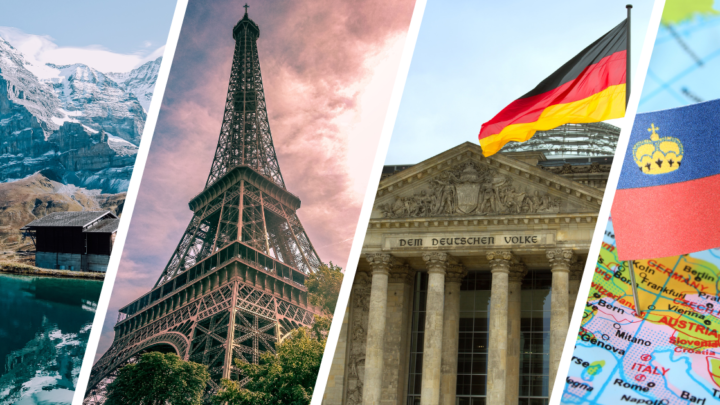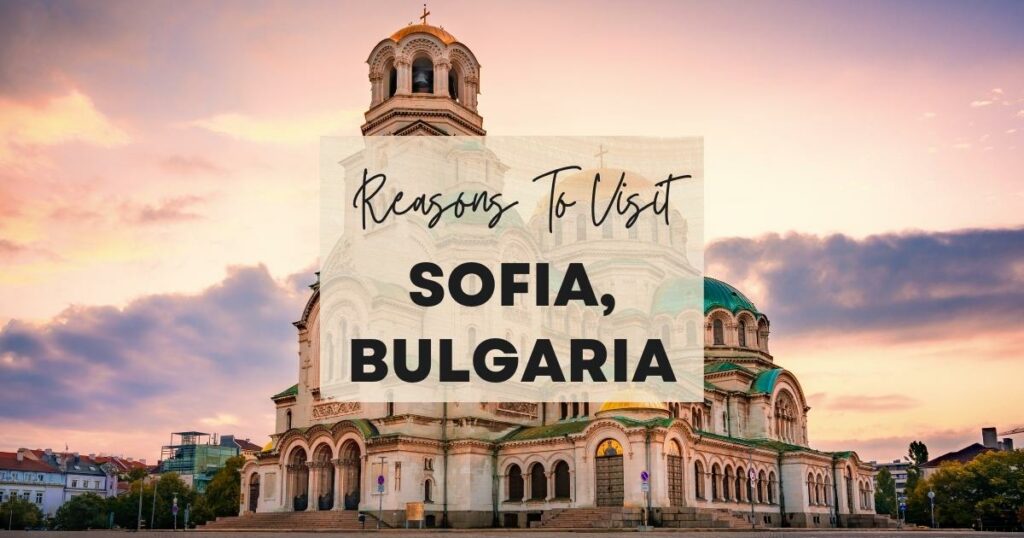Where should you go for the holidays? Try Sofia, Bulgaria. Make the most of your vacation time in Sofia, Bulgaria, we have compiled a list of our favorite things to do in Sofia, Bulgaria. Explore the top attractions and activities in the best places to go in Sofia, Bulgaria, by scrolling down! As a Web 3.0 travel startup, Wondrous Drifter aspires to make a huge impact on the world.
Table Of Content
- Banya Bashi Mosque, Sofia (Bulgaria)
- Borisova Gradina, Sofia (Bulgaria)
- Boyana Church, Sofia (Bulgaria)
- Central Mineral Baths, Sofia (Bulgaria)
- Earth and Man National Museum, Sofia (Bulgaria)
- Ivan Vazov National Theatre, Sofia (Bulgaria)
- Kuklite, Sofia (Bulgaria)
- Lovers Bridge, Sofia (Bulgaria)
- Muzeiko, Sofia (Bulgaria)
- National Art Gallery, Sofia (Bulgaria)
- National Institute of Archaeology, Sofia (Bulgaria)
- Russian Church, Sofia (Bulgaria)
- Sofia Synagogue, Sofia (Bulgaria)
- St. Alexander Nevsky Cathedral, Sofia (Bulgaria)
- St. George Rotunda, Sofia (Bulgaria)
- The Women’s Market, Sofia (Bulgaria)
- The Yellow Brick Road, Sofia (Bulgaria)
- Vitosha Boulevard, Sofia (Bulgaria)
- Vitosha Mountain, Sofia (Bulgaria)
- Vrana Palace, Sofia (Bulgaria)
- Explore Europe
Banya Bashi Mosque, Sofia (Bulgaria)
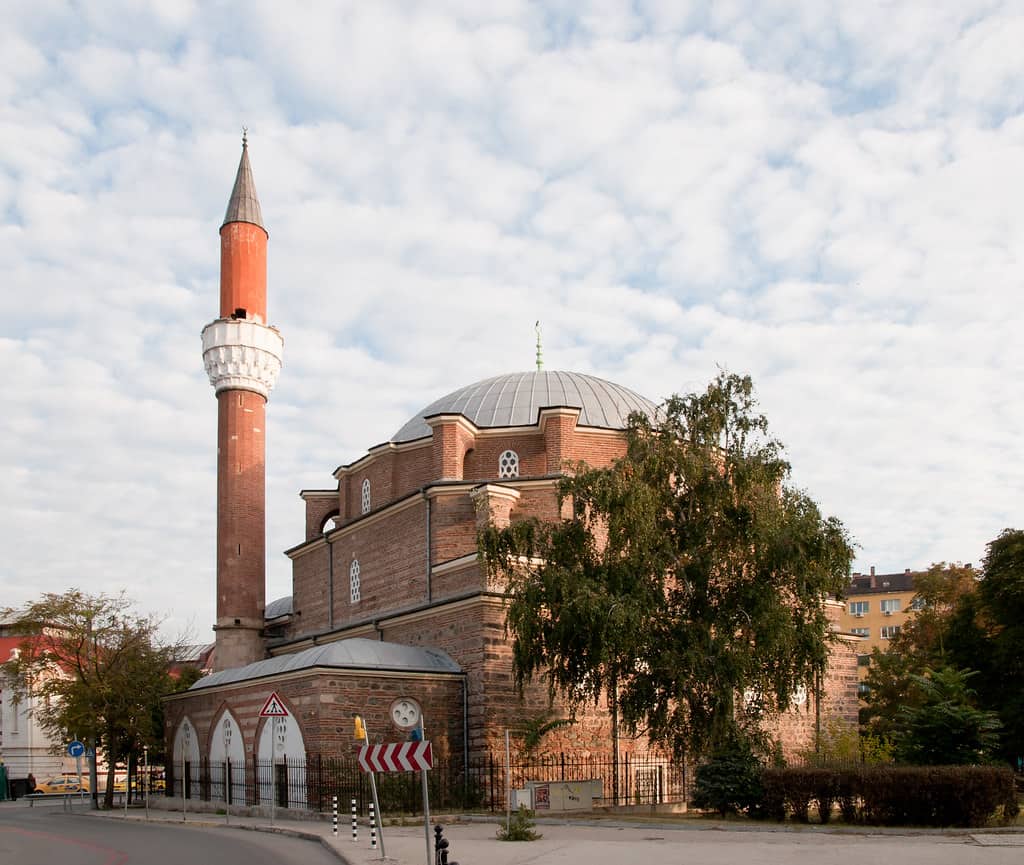
Architecture is a frozen masterpiece.
The Banya Bashi Mosque was constructed in the 16th century, making it the only and the oldest mosque in Sofia, Bulgaria.
The renowned Ottoman architect Sinan designed the mosque, which is widely considered among the finest architects in history.
It is interesting to note that it received its name from the word “Banya Bashi.”
Its name translates to “many baths” since it was constructed atop hot springs.
Because the mosque was built in an Ottoman style, the mosque’s stunning architecture can be appreciated both on the interior and the outside of the building.
This building has some of the most spectacular architecture you’ll ever see.
Its minaret is rather tall, so pictures of it might provide some genuinely breathtaking results.
In addition, you are more than welcome to attend the mosque.
However, you must remove your shoes and dress modestly before entering the building.
Make it a point to check out the stunning Banya Bashi Mosque as soon as possible!
Address: Bulevard “Knyaginya Maria Luiza” 18, 1000 Sofia Center, Sofia, Bulgaria
Borisova Gradina, Sofia (Bulgaria)
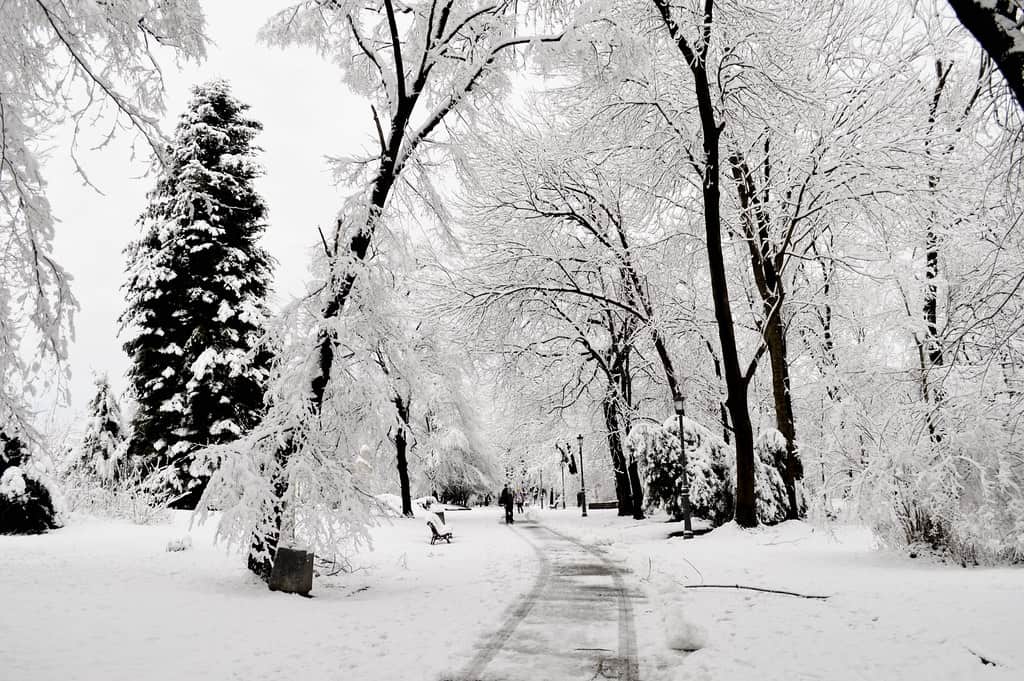
You can’t help but fall for Borisova Gradina.
Borisova gradina, also referred to by the locals as Knyaz-Borisova gradina, is the city of Sofia’s oldest and most gorgeous park.
The garden was established in 1884 and was named after Tsar Boris III.
He was in power throughout the early 20th century.
It is fascinating to learn that the area has been available to the public since the 19th century.
Hence, strolling about will give you the impression that you are traveling through time.
This garden features several unique features, such as fountains, statues, lakes, cycling tracks, and tennis courts.
These are places where you and your family may have fun together.
Your children will have a wonderful time playing in this garden while also having the opportunity to socialize.
While you watch kids play, there are many trees and shady spaces for you to sit in so you can take a break.
Come to Sofia as soon as possible if you want to check out the entirety of the park.
This magnificent park awaits your exploration.
Address: Sofia, Bulgaria
Boyana Church, Sofia (Bulgaria)
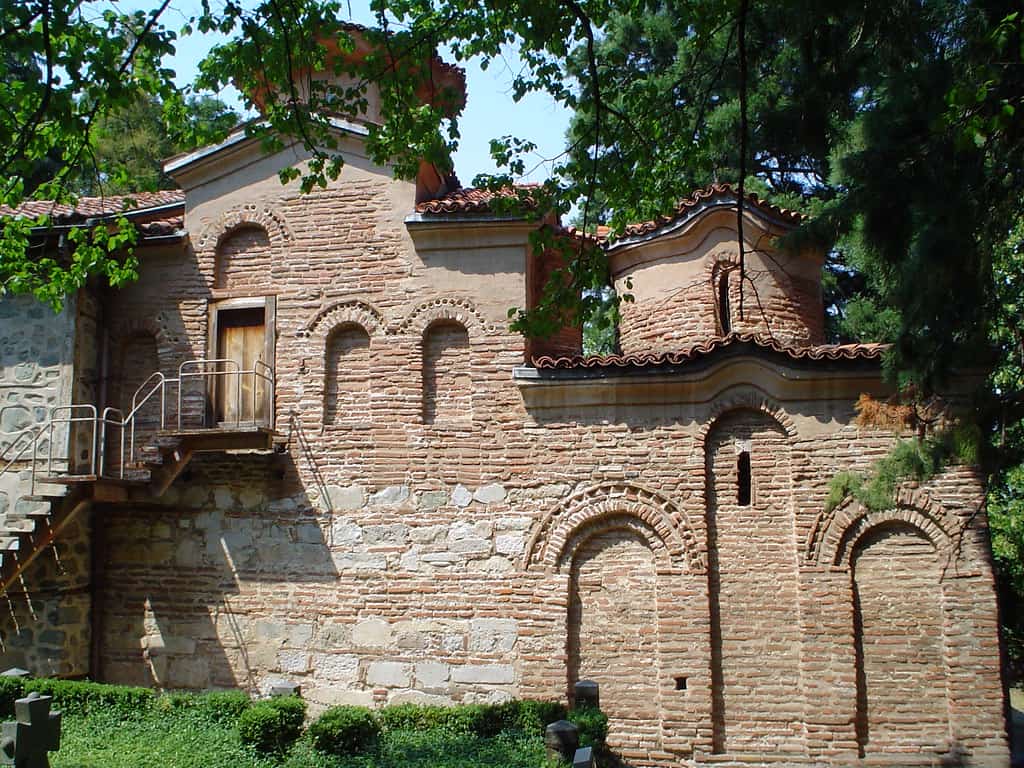
Locked in the gaze on the magnificent medieval frescoes.
The medieval paintings at Boyana Church, Saint Nicholas, and Saint Panteleimon Church are well-known.
It is also one of the best-preserved medieval monuments in Europe.
In fact, this church is included on the UNESCO World Heritage list.
Because of this, it is regarded as a significant cultural artifact across Europe, not only in Bulgaria.
This church was constructed in three stages from the 1000s to the 1800s.
Although the most significant additions were made in the 1200s.
The setting of this medieval church in a quiet city district is nearly magnificent, nestled amongst a forest of tall softwood trees.
Interior frescoes showing 240 historical and biblical characters were realistically created at this time, 200 years before the renaissance painters’ work.
Among the works by an unidentified artist is a portrait of Tsar Konstantin Assen and Tsar Koloyan, two Bulgarian tsars, alongside their wives.
Check out the beautiful medieval frescoes at Boyana Church.
Address: ul. “Boyansko ezero” 3, 1616 Bojana, Sofia, Bulgaria
Central Mineral Baths, Sofia (Bulgaria)
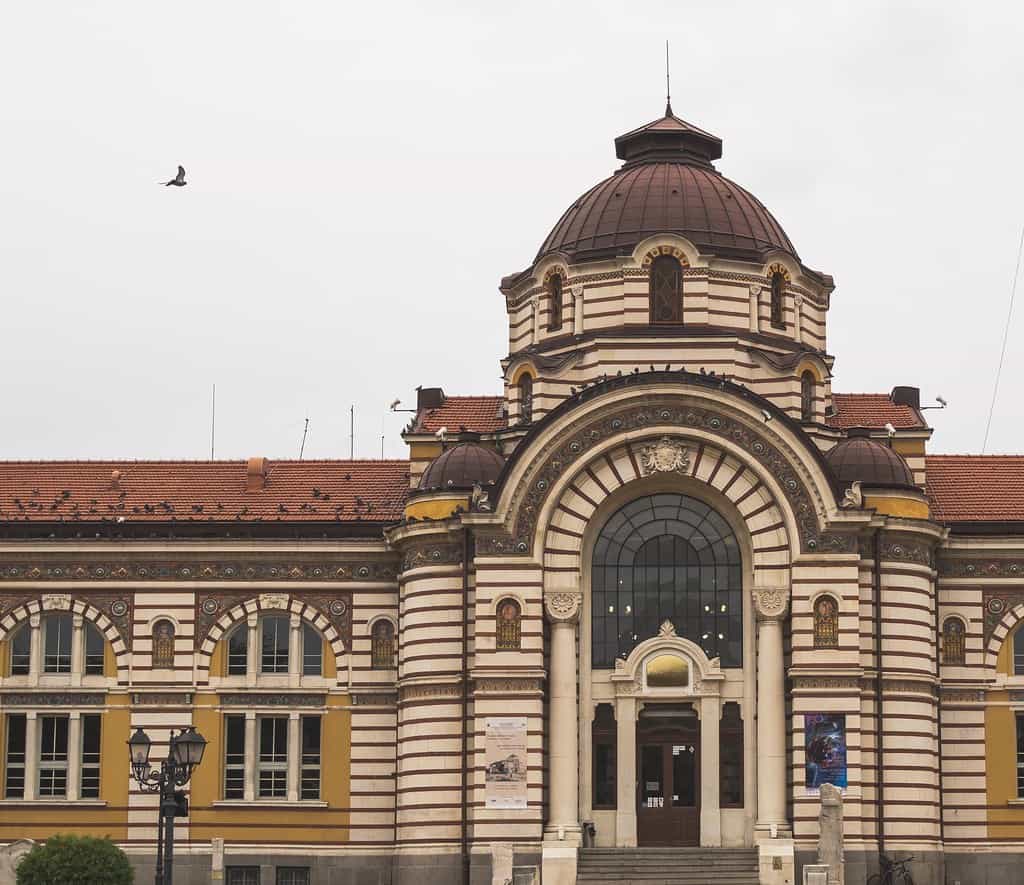
It’s about to get steamy from here.
The Central Mineral Baths are a well-known landmark in Sofia, Bulgaria’s capital city, noted for its mineral springs.
It was built in the early 20th century and served as the city’s public baths until 1986, when it was demolished.
Architects Petko Momchilov and Friedrich Grünanger drew up the Central Mineral Bath’s blueprints, which were approved in January 1906.
Vienna Secession features were used in the design with traditional Bulgarian, Byzantine, and Eastern Orthodox ornamentation.
The structure was completed in the next two years, and a garden was constructed in front of the Baths.
It is one of Sofia’s most photographed structures, built in the Neo-Byzantine style with a big dome and a fantastic entryway.
Sofia’s old mineral baths are now the Museum of Sofia.
It serves as a backdrop to a magnificent park with a fountain.
You can fill up your mineral water bottles for free!
Don’t miss out! Be part of the millions of travelers who visited Central Mineral Baths.
Address: 1 Banski Sq, 1000 Sofia, Bulgaria
Earth and Man National Museum, Sofia (Bulgaria)
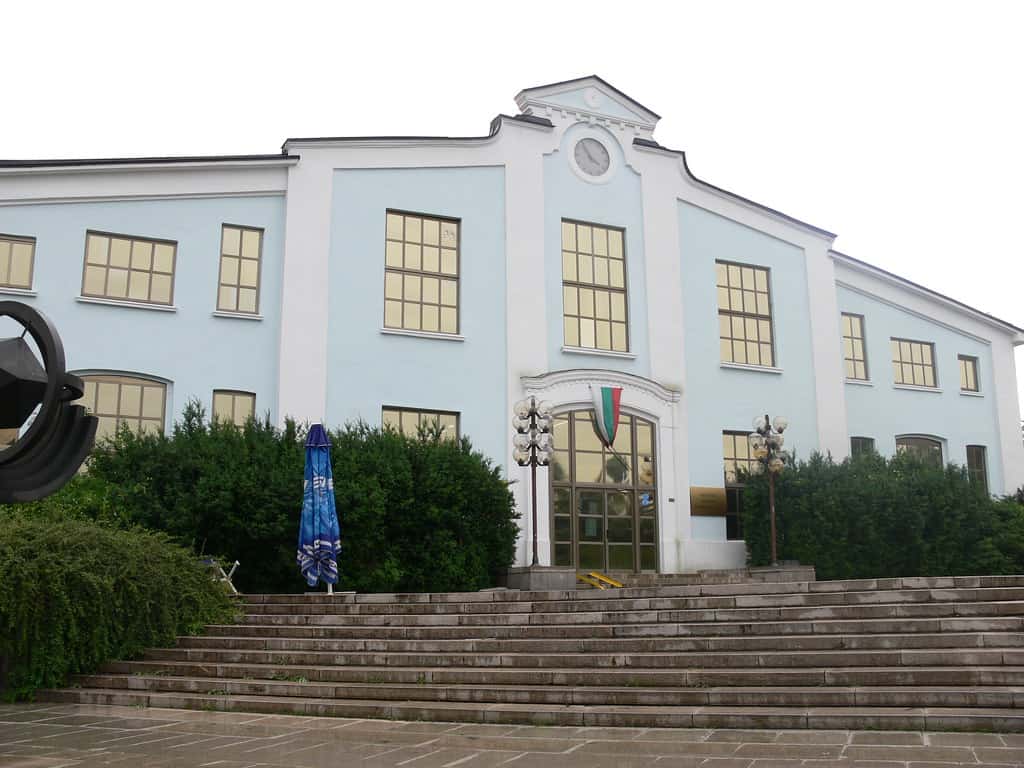
This place is a magnet to all the science geeks out there.
Many minerals are on display at the Earth and Man National Museum.
In fact, it is one of the largest in the world.
The museum was formed on January 1, 1986, and on June 19, 1987, the exhibition halls were opened to the public.
Different facets of Earth’s mineral kingdom are explored in this museum.
Environmental factors include the supply of raw materials and energy, scientific discoveries, and the museum’s emotional and aesthetic influence on its subjects.
The museum is housed in a 19th-century cultural landmark that has been renovated in the city’s historic center in Sofia.
Hristo Ganchev is the architect in charge of the renovation project.
The museum’s interior was designed by Ivan Radev, while Theophan Sokerov created the original murals that adorn the hall.
Earth science professionals have worked in and out of the museum for many years.
Many labs and libraries are available to visitors at the museum.
Visit the largest mineralogical museums today!
Address: Bulevard “Cherni vrah” 4, 1421 g.k. Lozenets, Sofia, Bulgaria
Ivan Vazov National Theatre, Sofia (Bulgaria)
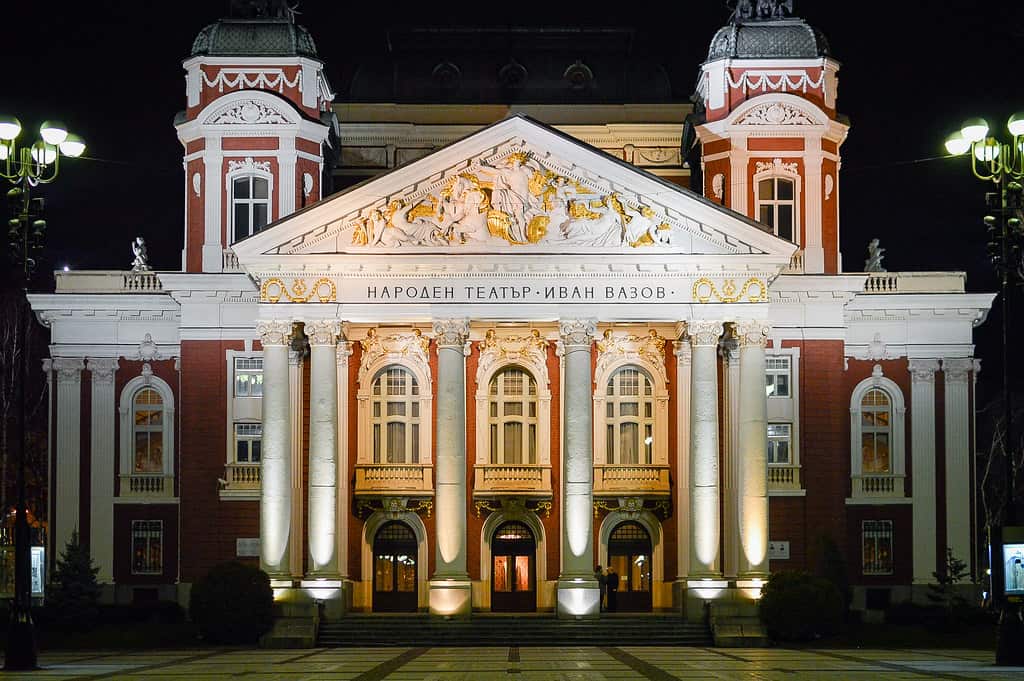
The theater is a source of everlasting fascination. Isn’t that how life is?
Bulgaria’s largest and oldest theater, the “Ivan Vazov” National Theatre, is also the most striking.
The National Theatre’s imposing structure overlooks the City Garden.
The Ivan Vazov National Theatre features a 750-seat main stage, a smaller 120-seat stage, and 70-seat fourth-floor stage.
Many of the country’s most well-known performers and directors work at the theater.
National Theatre Ivan Vazov was founded in 1904 by actors from the “Salza I Smyah” theater and was first referred to as simply the National Theatre.
But, the name was changed to Ivan Vazov, a well-known Bulgarian novelist.
The Hermann Helmer and Ferdinand Fellner-designed Neoclassical theater structure was completed in 1906.
Then, it opened to the public a year later, in 1907.
In 1925, the National Theatre created a theater school as part of the organization.
So what are you waiting for? Seek the spotlight at Ivan Vazov National Theatre now!
Address: ul. “Dyakon Ignatiy” 5, 1000 Sofia Center, Sofia, Bulgaria
Kuklite, Sofia (Bulgaria)
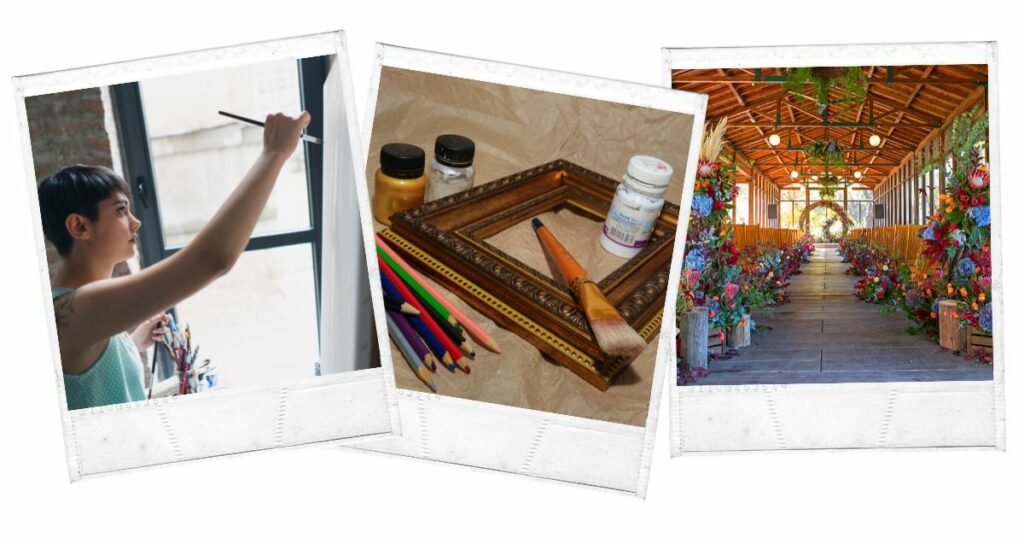
Create your mini you at Kuklite!
Located in the heart of Sofia, Kuklite (The Dolls) Art House offers a unique experience.
It is located in a 100-year-old house recognized as a cultural monument.
It has served as a doll museum, an applied art workshop, a children’s art center, and a party venue.
Regarding persons’ roles in society and life, dolls serve as excellent models.
Role-playing dolls and stage puppets are just a few of the many dolls that exist.
Exhibitions, music events, contests, and theatrical productions are just some of the exciting things that happen at the Doll House.
Excellent for families with small children (or the young at heart).
Antique, marionette, modern, porcelain, vintage, and collector dolls are among the more than 3,000 dolls on display at Kuklite.
The museum offers monthly classes for children to learn about dolls and doll-making.
Learning about dolls and creating dolls are two of the main aims of this program.
This is a great place to take the kids to the city.
Address: ul. “Tsar Samuil” 34, 1000 Sofia Center, Sofia, Bulgaria
Lovers Bridge, Sofia (Bulgaria)
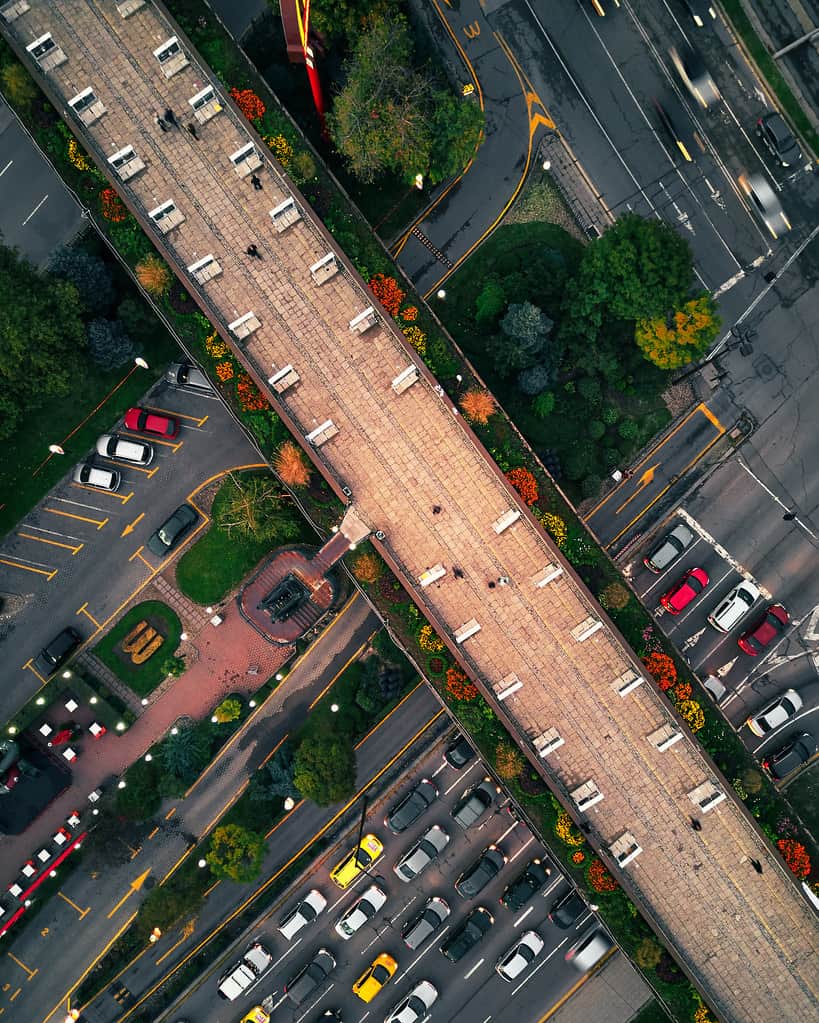
Love serves as a bridge that connects you to everything.
In the heart of Sofia, a pedestrian bridge crosses the Bulgaria boulevard and provides access to the city’s central square.
The bridge is known as the bridge of lovers among the locals, despite having no official name.
Many couples in love like spending the nights on the bridge and observing the traffic below.
It is not known who came up with the name for this bridge.
On the other hand, the bridge offers stunning views of the Vitosha mountain range and the city of Lozenetz below.
The bridge spans a large chasm and has an arch-like shape. For the younger generation, it is a favorite site for meetings.
It has been a popular location for exhibitions in recent years as well.
However, there have been several outdoor art shows there.
Meanwhile, the bridge is a popular location for businesses to advertise.
Exhibits such as those from National Geographic, the worldwide cartoon display, and photos of old Sofia are all free to attend.
Feel the love in the air at Lovers Bridge.
Address: Моста на влюбените, 1463 g.k. Lozenets, Sofia, Bulgaria
Muzeiko, Sofia (Bulgaria)
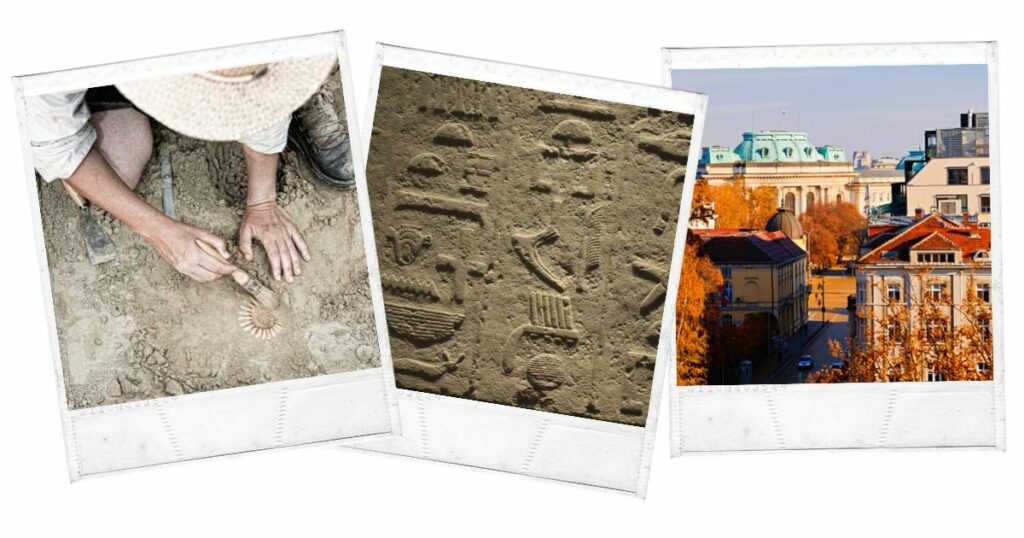
Time to jump into the past, present, and future!
America for Bulgaria Foundation created Bulgaria’s first children’s museum, Muzeiko.
As part of their objective to increase informal educational opportunities for Bulgarian children, families, and educators.
The 35,000-square-foot complex allows visitors to take a trip through time and space.
Its three floors with displays that entertain children and their families.
The museum’s lower levels are devoted to teaching children about “the past” through archaeology, geology, and paleontology displays.
The “present” is represented on the ground floor via interactive exhibits on the natural environment and modern cities.
With interactive exhibits on cutting-edge technology and space travel, the top level is dedicated to “the future.”
The architectural theme of “Little Mountains” refers to Bulgaria’s mountainous terrain.
Its glass volume is split into three sculptural shapes, or “mountains.”
With that, every reference to indigenous craft traditions in the nation through their color scheme and texture.
When it comes to Bulgarian youngsters, Muzeiko is a gift.
Overall, this place is full of learning opportunities, the arts, and rich cultural history.
Have some fun at the Muzeiko museum.
Address: ul. “Professor Boyan Kamenov” 3, 1756 Studentski Kompleks, Sofia, Bulgaria
National Art Gallery, Sofia (Bulgaria)
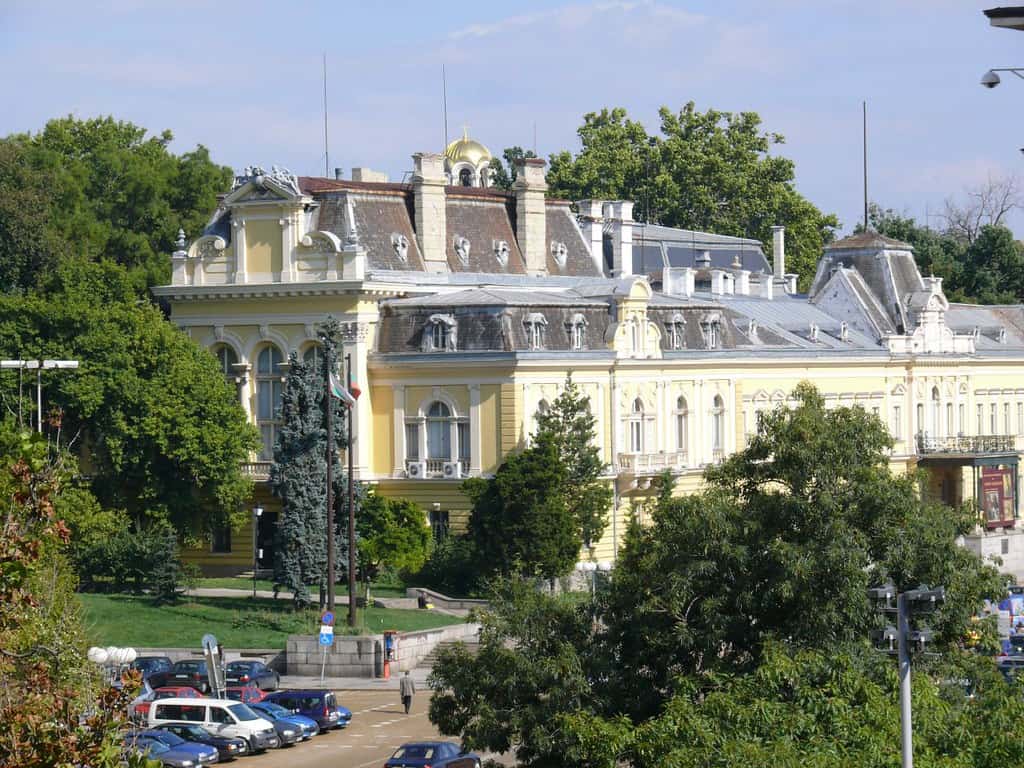
Look at these masterpieces, art enthusiasts!
The largest and most prestigious museum of its kind in Bulgaria is the National Museum of Bulgarian Art (NMBA).
Since then, it has grown into a pillar of national pride and a home for culturally significant items.
More than 30 000 sculptures, paintings, and prints are part of the museum’s New and Contemporary Bulgarian art collection.
It even dates back to Bulgaria’s liberation in 1878.
A lot of collections of paintings by Bulgarian masters can be found here.
Black and white illustrations are also plentiful. Some of Bulgaria’s finest 20th-century sculptors are displayed in the museum’s exhibits.
The museum’s rooms are frequently hosting exhibitions.
Every year, around 10 of these events take place in this location.
Most of the time, they’re devoted to well-known Bulgarian artists or important topics in contemporary Bulgarian art culture.
Exhibitions by various artists are held regularly to show how the artistic process has evolved since the country’s independence.
Visit the National Art Gallery to learn about Bulgaria’s history through art.
Address: i, ploshtad “Knyaz Aleksandar I” 1, 1000 Sofia Center, Sofia, Bulgaria
Those who never travel are like people who only read one page of a book. Time for an adventure for your trip. Kick off your world travel by checking out our how to travel the world guide. When traveling the world, you can’t skip the United States. Interested in a truly American adventure? Click here for the states worth visiting in USA.
National Institute of Archaeology, Sofia (Bulgaria)
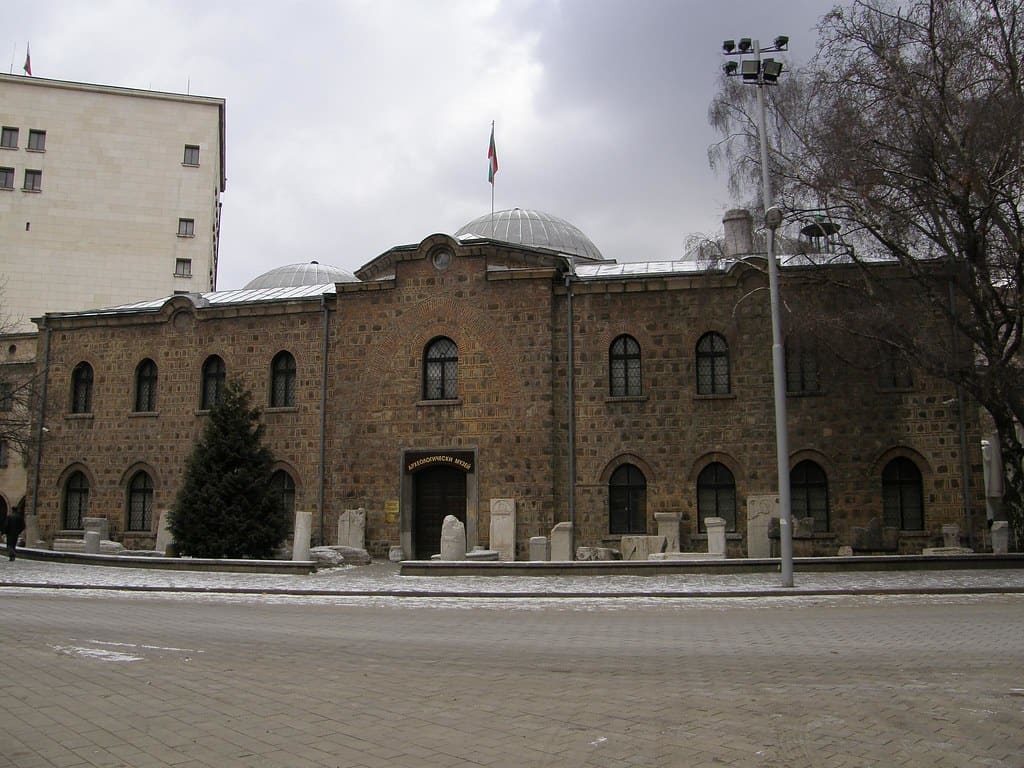
Bring yourself back to Bulgaria’s early history.
This museum is at the National Archaeological Institute, with the museum at the Bulgarian Academy of Sciences (NAIM-BAS).
It is dedicated to preserving the history and culture of people living in present-day Bulgaria from the remote past until the 18th century.
NAIM-BAS is the largest research archaeological facility in southeast Europe because of its academic and museum potential.
It was founded in 1949 as a follower and successor of the Department of Valuables.
It was also part of the Library in Sofia from 1878 to 1879 and reorganized into a National Museum in 1892.
The museum is housed in the building of Sofia’s largest and oldest Ottoman mosque, which is now an archaeological museum.
Scientific and methodological oversight is exercised by NAIM-BAS, a national institution and coordinator of all field research in Bulgaria.
The Museum of Archaeology has the country’s most extensive collection of artifacts.
In addition to prehistory items, the Archaeology Museum contains artifacts from the late Bronze Age to the Late Antiquity.
Also, you’ll find artifacts from ancient Thrace, Greece, and Rome.
Learn more and See more at the National Institute of Archaeology.
Address: пл. „Атанас Буров“, 1000 Sofia Center, Sofia, Bulgaria
Russian Church, Sofia (Bulgaria)
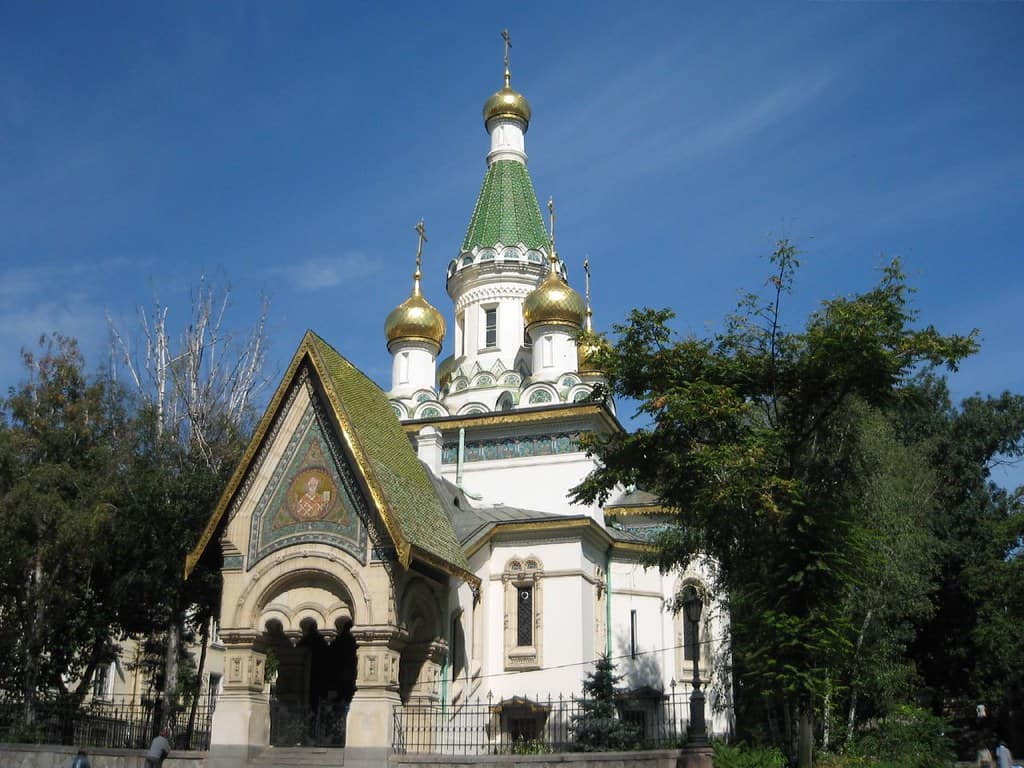
There’s no place like a church.
The Church of St. Nicholas, the Miracle-Maker, more commonly referred to as the Russian Church, is a lovely little church founded in Sofia.
The Russian church was constructed in 1914, just a few blocks from Sofia’s most famous landmark, the Alexander Nevsky Cathedral.
It was done in a 17th-century Muscovite church style and was designed by a Russian architect called Preobrajenski.
And with the aid of Russian construction workers — who also helped build the Alexander Nevsky Cathedral.
Vasily Perminov supervised a team of artists in designing interior murals.
He also made those at the Alexander Nevsky Cathedral in St. Petersburg.
The crypt holding the remains of Saint Archbishop Seraphim is located underneath the church’s main floor.
Tens of people still visit the grave of the archbishop, who died in 1950, praying and writing letters asking for desires to be realized.
Supposedly, the church was constructed for a Russian diplomat who didn’t want to pray in Bulgarian churches.
To this day, it’s one of Sofia’s most magnificent structures and a significant source of pride to many citizens.
Visit Russian Church if you need a break from thinking about everything.
Address: bul. “Tsar Osvoboditel” 3, 1000 Sofia Center, Sofia, Bulgaria
Sofia Synagogue, Sofia (Bulgaria)
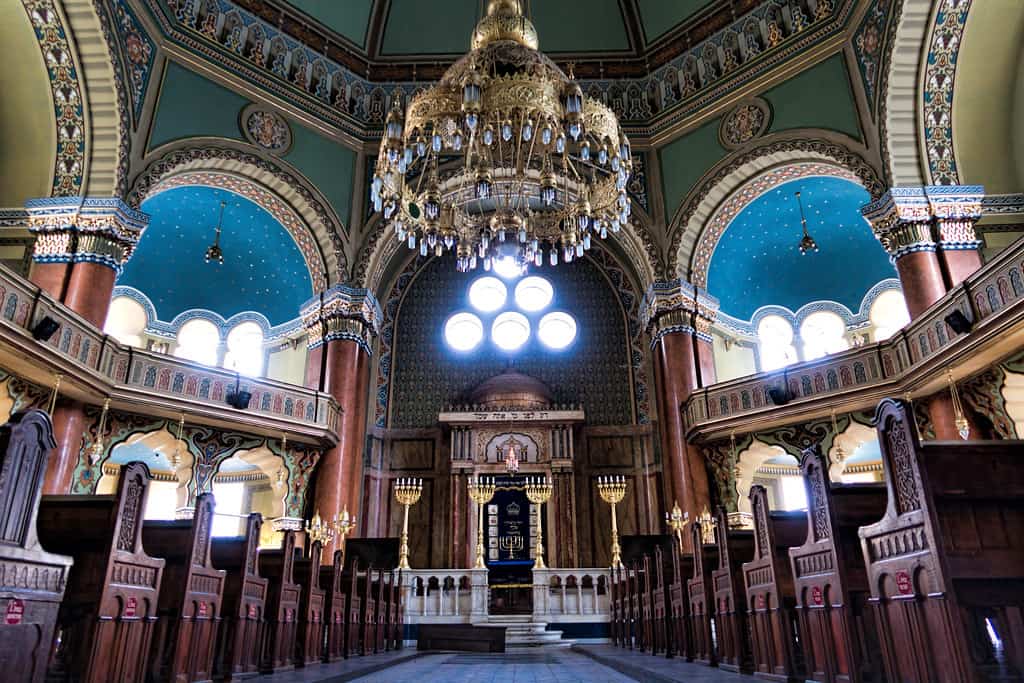
Get Away from the Crowds at the Sofia Synagogue.
Sofia Synagogue, one of Europe’s largest Sephardic synagogues, may be found in Sofia, Bulgaria, on the corner of Ekzarh Yosif and G. Washington.
It is the only synagogue for Jews that exists in Sofia.
The Sofia Synagogue is a stunning piece of Bulgarian architecture.
As a result of its relative obscurity, it offers a tranquil respite from the hustle and bustle around you.
The Central Synagogue of Sofia is rightly referred to be the glory of Bulgarian Jewry’s history and culture.
In fact, it has stood as a symbol for Bulgaria’s Jewish population for over a century.
And it is second only to Europe’s largest Sephardic synagogue, one in Spain.
When the synagogue was completed between 1905 and 1909, it was designed by Austrian architect Gruenanger.
You won’t find many visitors here yet, so you’ll have plenty of time. Visit Sofia Synagogue today!
Address: Exarch Joseph Street 18, 1000 Sofia Center, Sofia, Bulgaria
St. Alexander Nevsky Cathedral, Sofia (Bulgaria)
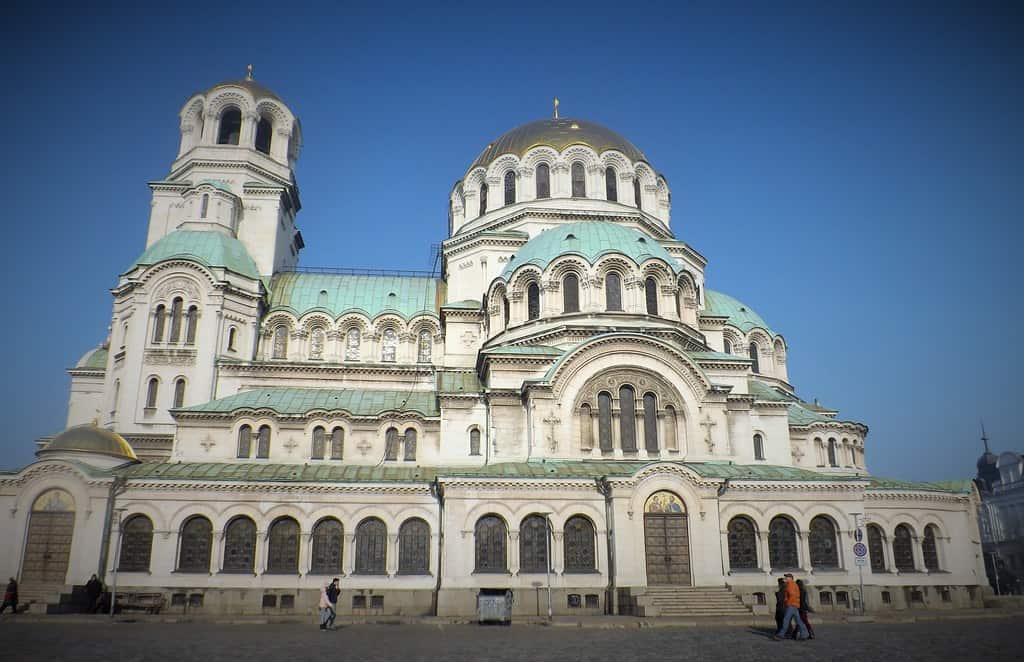
Say your prayers at the largest Eastern Orthodox cathedrals!
The Bulgarian Orthodox St. Alexander Nevsky Cathedral is in Sofia, Bulgaria’s capital.
It’s one of the world’s biggest Orthodox cathedrals.
It has a 45-meter gold-plated dome on top of a 50-meter bell tower in the cathedral.
Second in size only to Belgrade’s Cathedral of Saint Sava on the Balkan Peninsula, this structure is a major religious landmark.
Built in the Neo-Byzantine style, it is a major tourist destination in Sofia, and the church can accommodate 10,000 people.
It was created in the early twentieth century to honor the 200,000 Belarusians, Ukrainians, Bulgarian, and Russian troops.
Gilded domes, wintergreen, countless arches, mosaics, and murals may be seen if you look up at the cathedral.
Moreover, the temple’s bell tower has 12 bells weighing 23 tons, and the building is 148 feet tall at its highest point.
It’s also important to note that a museum in the cathedral’s crypt has a large collection of Orthodox icons and paintings.
Take a look at Bulgaria’s most recognizable landmark.
Address: pl. “Sveti Aleksandar Nevski”, 1000 Sofia Center, Sofia, Bulgaria
St. George Rotunda, Sofia (Bulgaria)
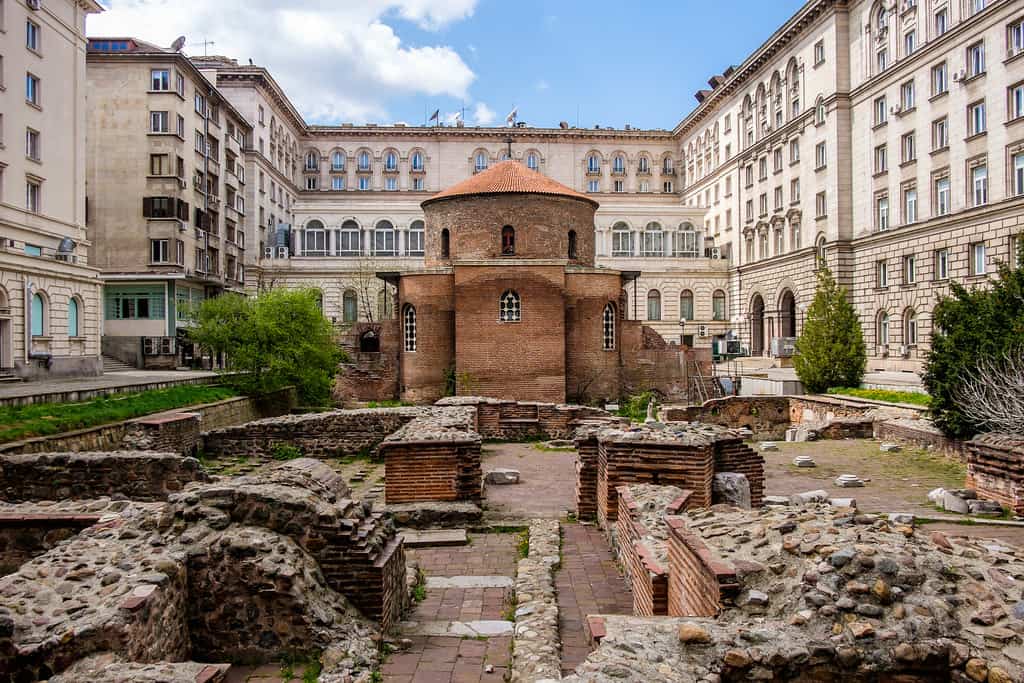
Have you ever been to the oldest church in Bulgaria? Then, you’ve struck gold!
Sofia’s oldest standing structure is the Church of St. George.
There are semicircular niches in the corners of the red-brick domed Rotunda Room, which stands on a square foundation.
As far back as the fourth century, it’s been a place for baptismal ceremonies.
It’s a part of a much broader archaeological complex.
Ancient ruins may be located behind the apse, including surviving the foundations of a large basilica, a Roman street, and possibly other public buildings.
In 343, there were believed to be some Council of Serdica meetings held on this same site.
There are five layers of partially intact wall paintings, the earliest being a Roman-Byzantine with floral patterns from the 4th century.
There are 10th-century frescoes portraying angels on the walls.
Other frescos represent diverse themes, including the ascension and the assumption, dating back to the 11th and 12th centuries.
The church was converted to a mosque in the 16th century during Ottoman rule.
Toward the end of that century, the Ottomans abandoned it. Later, it was repurposed into a place of worship for the Christian faith.
Start your journey at St. George Rotunda.
Address: bul. Kniaz Aleksandar Dondukov 2, 1000 Sofia Center, Sofia, Bulgaria
The Women’s Market, Sofia (Bulgaria)
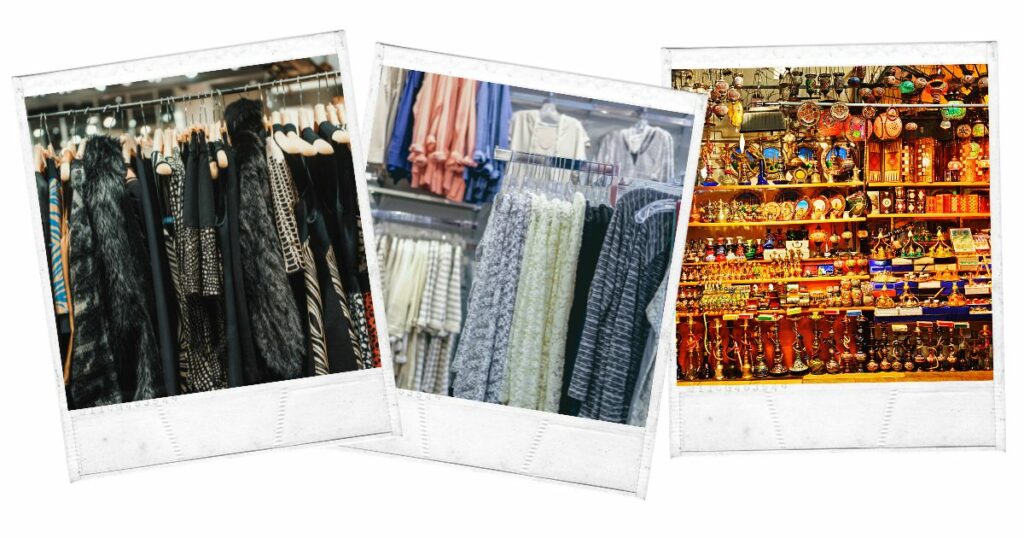
Got cash? Then spend it here at the Women’s Market!
There is no better place to shop in Sofia’s lively atmosphere than the Women’s Market (also called the Ladies’ Market, Ladies’ Bazaar, or the Zhenski Pazar).
As the oldest open-air Market in town, the Women’s Market was founded soon after Bulgaria was freed from Ottoman control in 1878.
The term “Ladies’ Bazaar” has its roots in the Ottoman era.
When women were only allowed to shop in the area now known as the Ladies’ Bazaar.
So on Fridays, they were only able to do so.
Women’s Market offers one of the most diverse selections, from fresh fruits and vegetables to exotic spices and meat and dairy products to apparel and souvenirs to numerous little devices.
Another well-known aspect of this particular Market is that it is one of the most affordable locations to shop in Sofia.
Numerous shops provide goods for less than a single US dollar.
Most important tourist attractions, such as the Square of Tolerance, are just a short walk away from this open-air Market.
Shop now at Women’s Market.
Address: bul. “Stefan Stambolov”, 1202 Sofia Center, Sofia, Bulgaria
The Yellow Brick Road, Sofia (Bulgaria)
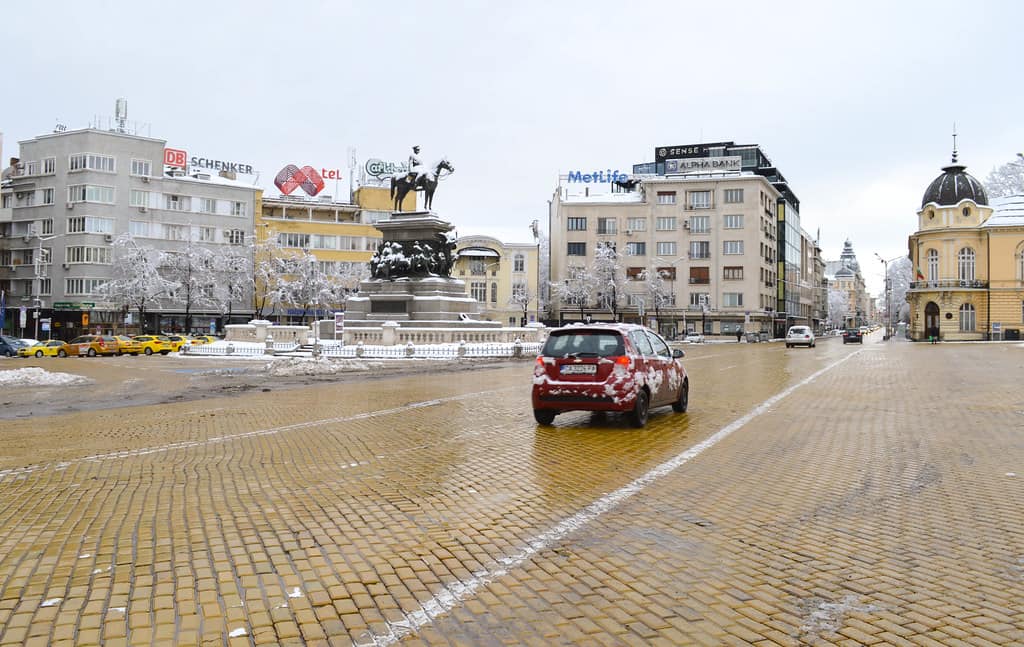
The land of Oz – Sofia has a yellow brick road. It’s absolutely true!
The story went when Prince Ferdinand of Bulgaria and Princess Marie Louise of Bourbon-Parma tied the knot in 1893 in Bulgaria.
He aspired to turn the city into a trendy European center on par with Vienna and Budapest.
The only issue was that Sofia in the 19th century was a small, simple town without a single paved street.
Fortunately, Hapsburg relatives sent him yellow cobblestones for the road between his Palace and the National Assembly building, which had just been completed nearby.
The bricks were presented apparently as a wedding gift to commemorate his marriage.
Still, they were placed in storage until 1907, when they were ultimately installed to give Sofia its own yellow brick road.
Residents of the city say they were “born on yellow bricks,” even though most weren’t born in the city.
That being said, it serves its purpose by making it easy to identify oneself as a native Sofian, both in spirit and actuality.
Take advantage of the opportunity to witness this firsthand!
Address: Sofia, Bulgaria
Vitosha Boulevard, Sofia (Bulgaria)
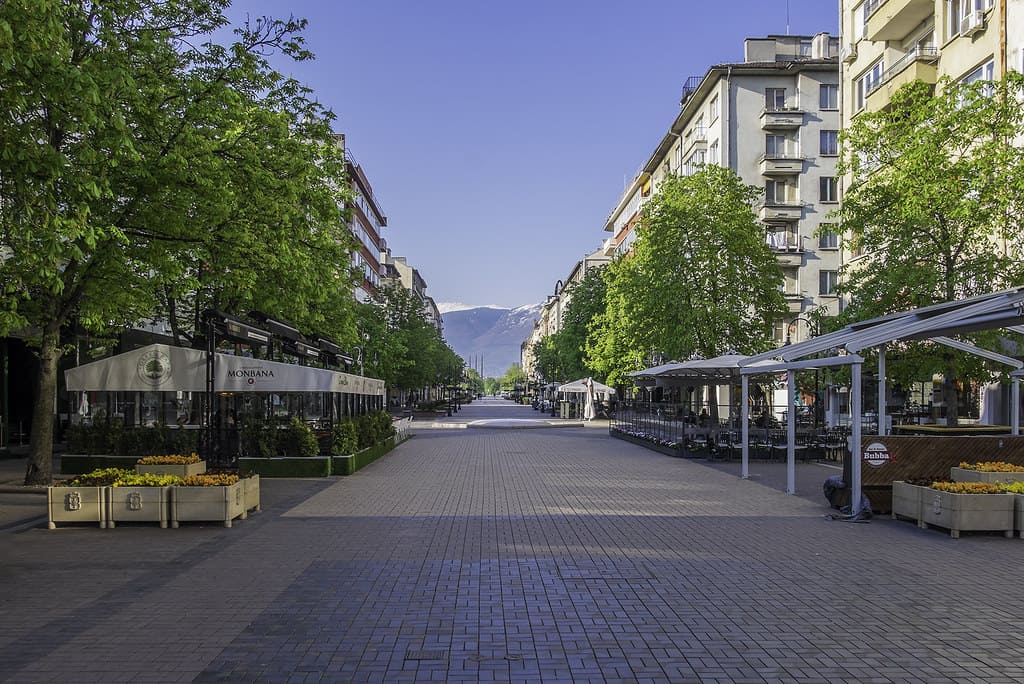
Your credit card is ready, are you?
You’ll find the central shopping district in the heart of Sofia, Bulgaria’s capital.
Its well-kept exterior draws tourists in addition to the various stores, cafés, and restaurants.
You can shop, dine, and walk along Sofia’s major retail thoroughfare, Vitosha Boulevard.
It is also one of the city’s most popular pedestrian areas.
The mountain near Sofia, Vitosha, inspired the name of the boulevard. It is the country’s fourth-highest summit.
The Vitosha Boulevard extends from the Sveta Nedelja Cathedral to the southern city park at around 600 meters.
No cars are permitted on the shopping mile, allowing visitors and locals to simply stroll and take in the sights.
As a result, there is a lot to do!
On Vitosha Boulevard, you’ll find sparkling outlet stores for all the top fashion brands, like Versace, Bulgari, Lacoste, Escada, etc.
There’s a laid-back vintage vibe created by Art Nouveau kiosks, antique benches and streetlights, beautiful fountains, and open-air bars.
If you enjoy shopping, then visit Vitosha Boulevard!
Address: between Patriarch Eftimii Blvd. and St. Nedelya Square
Vitosha Mountain, Sofia (Bulgaria)
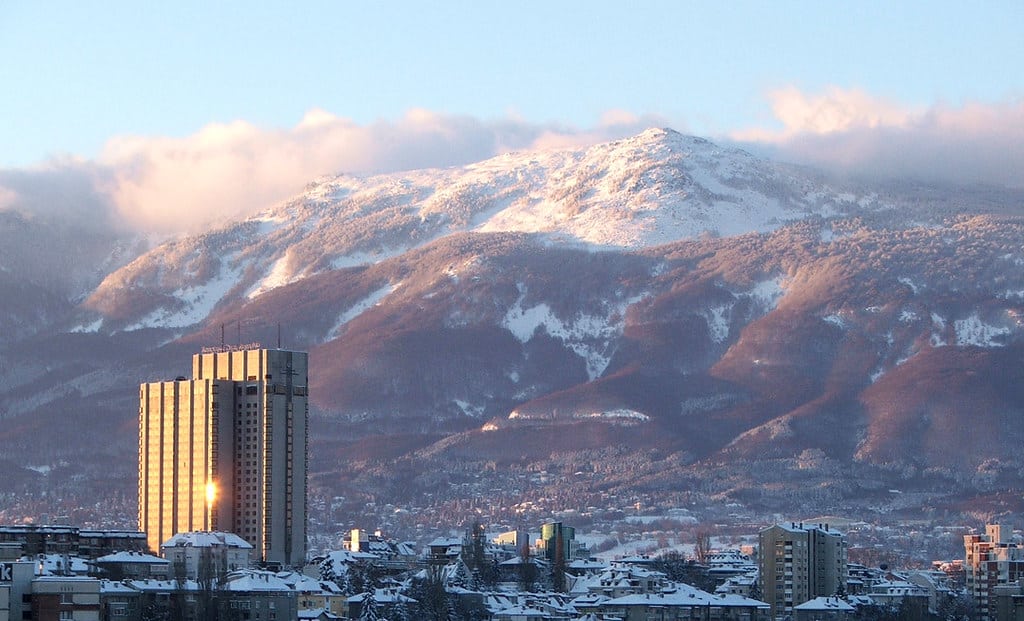
Have you reached the “PEAK” experience of your adventure? Then, gear up to the Vitosha mountain!
The Sofia is blessed by being located at the foot of the spectacular Vitosha mountain.
In Bulgaria, it is the country’s fourth-highest peak.
The mountain, which stands at an impressive 2290 meters high, is a great escape from the city’s sweltering summer heat.
Also, it can be viewed from nearly every angle in the city.
Century-old pine trees await your getaway from the hustle and bustle of metropolitan life.
The mountain is blanketed with snow from January to March, making it ideal for skiing and snowboarding.
Spring and fall are the greatest times to take a scenic 15-kilometer hike up the magnificent mountain.
Blueberries (borovinki) can still be found in the fall months.
Although the wild strawberries and raspberries have long since gone.
A gondola lift from Simeonovo will take you up to Vitosha at Aleko, the mountain’s ski resort.
Walking up Vitosha’s Black Summit from there is surprisingly light in spring and fall.
Since the peak is part of a vast plateau that appears to continue forever because of its modest grade.
Experience the thrilling adventures that await at Vitosha mountain.
Address: Sofia, Bulgaria
Vrana Palace, Sofia (Bulgaria)
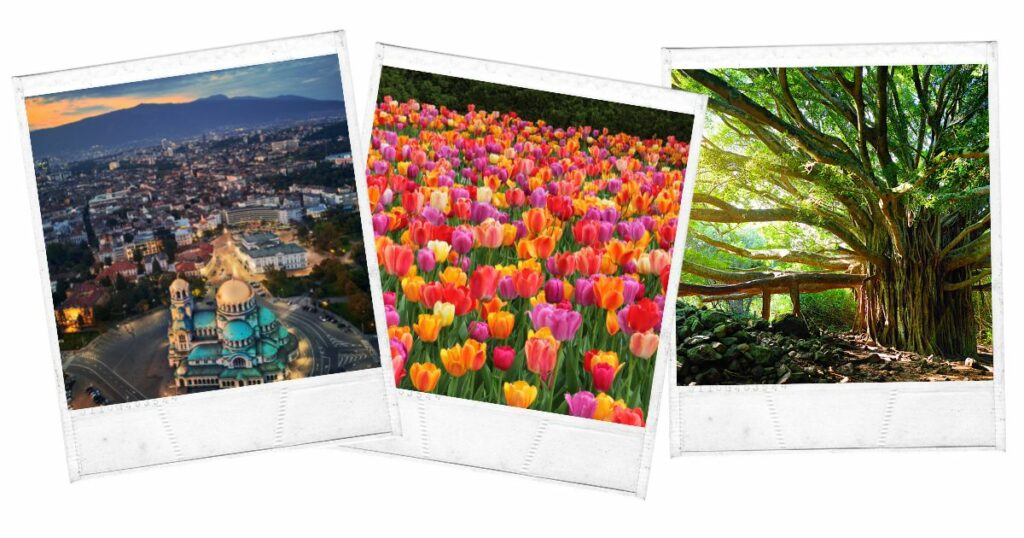
Walk like a king or queen at Vrana Palace.
Vrana Palace and its lovely park are a wonderful fusion of historic architecture with the beauty of the outdoors.
Located close outside Sofia, the Palace served as the primary residence of the Bulgarian royal family.
The Old and New Palaces, constructed by King Ferdinand between 1861 and 1948, are part of a sprawling botanical park complex.
The new Palace is being restored to its original design to honor the royal family from 1909. It includes a museum, archive, and library.
The Palace was given to the city of Sofia by the royal family that welcomed the public and scientists in 2015.
Moreover. the park was planned by King Ferdinand and a team of landscape and gardening professionals from Bulgaria and abroad.
Take a stroll around this lovely, peaceful, and beautiful place.
Plants like the enormous water lily are spectacular to see.
However, the gigantic Chinese Wisteria near the complex’s entrance stands out among the many unique tree species that can be seen here.
Vrana Palace is a great place to explore.
Still unsure to make Sofia, Bulgaria your next destination? Visit reasons to visit Sofia, Bulgaria, at least once in your lifetime here.
Address: Boulevard “Tsarigradsko shose” 381, 1138 Sofia, Bulgaria

